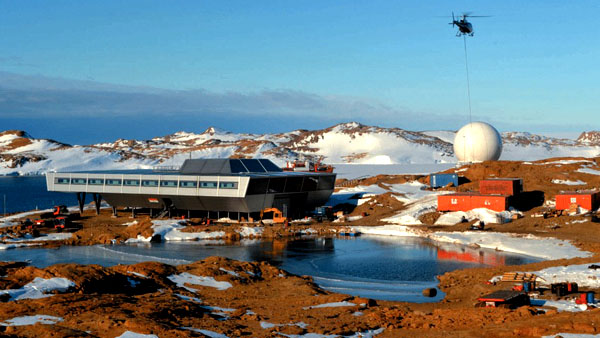By Satyabrat Borah
India’s journey to securing a place at the Antarctic table is a tale of scientific ambition, diplomatic maneuvering, and strategic foresight, all unfolding against the backdrop of a frozen continent that had long been the domain of polar powers. In the late 1970s, as the world grappled with the implications of human activity in one of Earth’s most pristine environments, India emerged as an unlikely yet determined player. The Antarctic Treaty, signed in 1959 by twelve nations including the United States, the Soviet Union, and several Western countries, had established a framework for peaceful scientific cooperation and banned military activities on the continent. By 1983, when the treaty expanded to include consultative status India’s inclusion marked a pivotal moment for the Global South. This status was not handed over lightly; it required demonstrating substantial scientific engagement, a criterion India met through sheer resolve, even though the nation had no historical footprint in Antarctica. The story begins in the corridors of New Delhi’s scientific institutions, where visionaries like Syed Zahoor Qasim, a marine biologist and the director of the National Institute of Oceanography, recognized the geopolitical and intellectual stakes. Qasim, often called the father of India’s polar program, argued that participation in Antarctic research was essential not just for knowledge but for asserting India’s voice in global environmental governance. At the time, India was a young republic, still navigating the post-colonial landscape, with limited resources and no polar infrastructure. Yet, the government saw value in projecting soft power through science, especially as decolonization movements amplified calls for equitable access to international commons like the oceans and poles.
The qualifications for consultative status under the Antarctic Treaty were stringent, centered on active and ongoing scientific research programs in Antarctica. Prospective members had to prove they could contribute meaningfully to the treaty’s objectives, which included meteorological observations, geological surveys, and biological studies, all while adhering to the protocol on environmental protection. For India, this posed a paradox: how to qualify for a seat without prior presence? The answer lay in a bold, bootstrap expedition launched in 1981. Named the Ninth Indian Expedition to Antarctica,though it was technically the first,this venture was a high-stakes gamble. A team of 40 scientists, engineers, and support staff, led by Qasim himself, set sail from Goa aboard the survey vessel ORV Sagar Kanya on December 1, 1981. The ship, a modest 1,700-tonne vessel equipped for oceanographic work, was not designed for polar ice, forcing the team to transfer to a chartered Norwegian supply ship, the Polar Queen, in Mauritius for the final leg across the Southern Ocean. The voyage was arduous, plagued by rough seas and logistical nightmares, but it symbolized India’s determination to bridge the gap between aspiration and achievement.
Upon arrival in early January 1982, the expedition established India’s first research base, Dakshin Gangotri, on a nunatak,a rocky outcrop protruding from the ice shelf,in the Schirmacher Oasis region of Queen Maud Land. This site, about 2,500 kilometers from the South Pole, was chosen for its relative accessibility and potential for year-round operations. The base was rudimentary: prefabricated huts, generators powered by diesel, and basic labs for glaciology, atmospheric science, and geomagnetism. Over the next 18 months, the team conducted groundbreaking work, including ice core drilling to study past climates, microbial sampling to understand extremophile life forms, and ozone layer monitoring amid emerging concerns about the Antarctic hole. These efforts were not mere token gestures; they generated data that fed into global datasets, earning praise from established polar nations. By the time the second expedition followed in 1982-83, using the ice-strengthened chartered ship Ferdinand, India had amassed enough evidence of its capabilities. The government’s Department of Ocean Development, under Prime Minister Indira Gandhi’s administration, presented this portfolio at the Sixteenth Antarctic Treaty Consultative Meeting in Wellington, New Zealand, in October 1983. Delegates from the original signatories scrutinized India’s submissions, but the empirical proof like detailed reports, photographs of the base, and preliminary findings tipped the scales. On October 28, 1983, India was unanimously accorded consultative party status, joining 15 other nations with decision-making powers. This elevation transformed India from observer to stakeholder, allowing it to influence policies on mining bans, tourism regulations, and climate research protocols.
What truly set India’s case apart was the ingenuity in overcoming its novice status. Unlike the United States or Russia, with their vast fleets of icebreakers and decades of experience, India lacked the technological edge. So, it leaned on alliances and improvisation. Early collaborations with the Soviet Union provided logistical support; Moscow, eager to counterbalance Western dominance, shared satellite imagery and even hosted Indian trainees at its Antarctic stations. Similarly, exchanges with New Zealand and Australia offered training in cold-weather survival and field techniques. Qasim’s team included young researchers like R. Sen Gupta, a glaciologist who later became a polar veteran, and engineers who jury-rigged equipment against sub-zero temperatures. The qualification wasn’t just about showing up; it was about contributing uniquely. India’s tropical perspective brought fresh angles, such as comparative studies on monsoon influences on global circulation patterns, linking Antarctic ice dynamics to South Asian weather. This interdisciplinary approach highlighted how a non-polar nation could enrich the treaty’s collaborative ethos. Skeptics might have questioned India’s readiness, pointing to the 1982 expedition’s close calls, like a near-mishap with ice floes that delayed resupply. But the treaty’s spirit favored inclusivity, reflecting the post-Cold War thaw where developing nations demanded a say in shared resources. India’s entry underscored that qualifications were not monopolized by historical explorers; they could be forged through contemporary innovation and commitment to the treaty’s demilitarized, science-driven mandate.
Funding this audacious foray was no less a feat of national prioritization. The expeditions were bankrolled primarily by the Indian government, channeling funds through the Department of Ocean Development, established in 1981 specifically to spearhead such initiatives. The first expedition cost around 10 crore rupees,a sum that strained budgets amid economic liberalization pressures. Yet, Indira Gandhi viewed it as an investment in prestige and self-reliance. Parliamentary debates reveal heated discussions: opposition leaders like Atal Bihari Vajpayee praised the scientific merits but queried the expense, while proponents argued it paled against defense outlays and promised long-term dividends in technology transfer. To stretch resources, India adopted a frugal model: domestic shipbuilding firms like Hindustan Shipyard modified vessels on the cheap, and scientists sourced equipment from university labs rather than expensive imports. International aid played a supplementary role; the United Nations Development Programme chipped in grants for training, and bilateral ties with Japan provided meteorological gear. Over time, as the program matured, funding diversified. The Council of Scientific and Industrial Research and the Indian Space Research Organisation contributed to satellite-linked communications, while private sector involvement grew with companies like Tata Consultancy Services aiding data analysis. By the 1990s, annual budgets stabilized at 50-100 crore rupees, supporting permanent bases like Maitri (established in 1989) and Bharati (2008). Today, the National Centre for Polar and Ocean Research oversees a robust ecosystem, blending public funds with international collaborations under the Antarctic Treaty Secretariat.
This foundational push yielded ripple effects far beyond 1983. India’s Antarctic program has since ballooned into a cornerstone of its blue economy strategy, yielding insights into sea-level rise that inform coastal defenses in a climate-vulnerable nation. Discoveries like ancient microbial ecosystems in subglacial lakes have advanced astrobiology, with implications for Mars exploration. Diplomatically, it bolstered India’s credentials in forums like the UN Framework Convention on Climate Change, where Antarctic data underscores calls for equitable burden-sharing. Yet, challenges persist: funding remains vulnerable to fiscal shifts, as seen during the 2016 demonetization when expedition delays occurred. Environmental ethics also weigh heavy; India’s commitment to the 1991 Madrid Protocol’s mining moratorium reflects a matured stewardship, though domestic coal lobbies occasionally murmur dissent.
Reflecting on how India clawed its way to the Antarctic table, one sees a microcosm of the nation’s post-independence ethos: resourcefulness amid scarcity, diplomacy laced with science, and a refusal to be sidelined. Without prior presence, India qualified by building one from scratch, funding it through collective will and clever partnerships. Syed Zahoor Qasim’s legacy endures in the annual voyages that now carry over 200 personnel, turning a frozen frontier into a symbol of inclusive globalism. As melting ice reveals new vulnerabilities, India’s seat ensures a voice from the equator resonates in polar deliberations, reminding us that the table, like the treaty, expands for those who dare to contribute.




